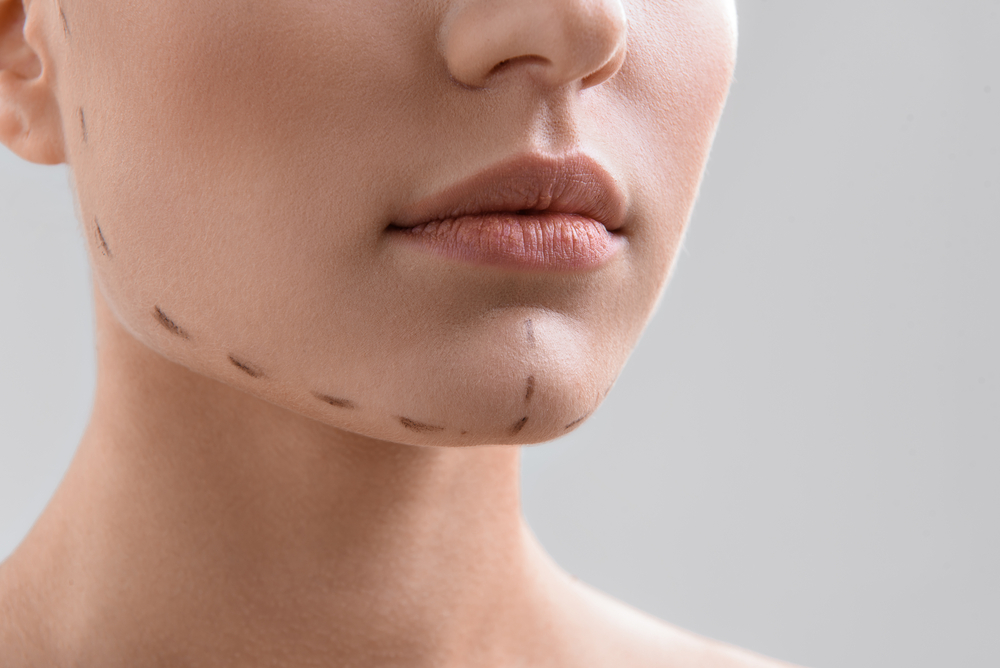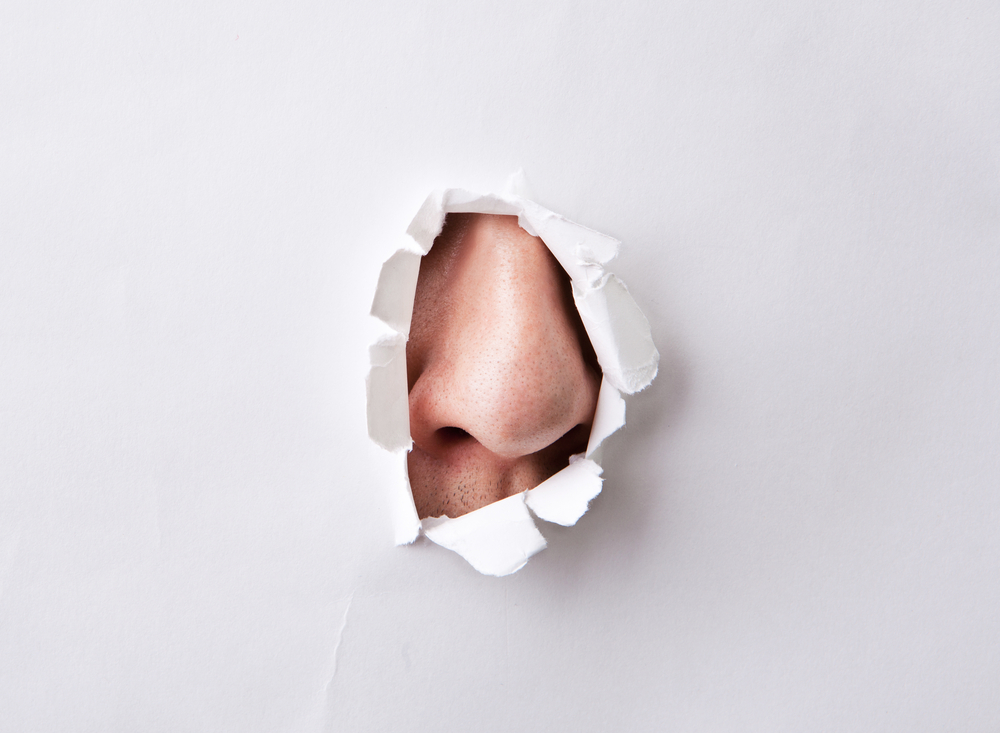- Sliding genioplasty is a chin enhancement procedure where a doctor physically slides the jaw bone forward to create more projection in the chin and lower face.
- Those looking to treat a retrusive chin (caused by a lower jaw that doesn’t project much from the face), are good candidates for sliding genioplasty.
- Sliding genioplasty brings more risk and complications than chin implants, so it’s usually only recommended for people who can’t be helped with implants alone.
- Only a board-certified plastic surgeon or maxillofacial surgeon will be able to tell you whether sliding genioplasty is the right option for your situation.
Fuller lips, a slimmer waist and a chiseled, defined jaw: all these things factor into our construct of beauty, but some are more easily achieved than others. Specifically, it’s the perfect profile that’s stumped plastic surgeons for decades. Now, surgeons are able to offer a plethora of chin augmentation procedures — including a less common one called sliding genioplasty — to help correct the appearance of a weak chin.
Chin implants and traditional chin augmentation surgery (mentoplasty) are among the most popular plastic surgery procedures du jour. According to the American Society of Plastic Surgeons (ASPS), some 16,000 people underwent mentoplasty surgery in 2016. Interestingly, chin implant procedures helped contribute to an overall spike in plastic surgery stats in recent years, with an impressive 71 percent boost between 2010 and 2011.
Since implants have quickly become the hottest new way to improve the appearance of the chin, traditional mentoplasty procedures have dropped in popularity. So why isn’t sliding genioplasty on the list of the most popular chin augmentation procedures?
Because for the most part, doctors only recommend this procedure for people with severe chin abnormalities and those looking for especially dramatic results.
The Basics: What It Is and Who Can Get It
In simple terms, sliding genioplasty is a plastic surgery technique wherein a plastic surgeon makes a controlled cut (osteotomy) in the patient’s chin bone and repositions it in a more desirable manner. The procedure gets the name “sliding genioplasty” because doctors often literally slide the chin bone forward, creating a more prominent and defined look. In medical terms, genioplasty refers to the reduction in material on a patient’s chin.
Because of this, sliding genioplasty surgery is often recommended for treating extreme cases of weak or recessive chins (otherwise known as chin under-projection). A more prominent chin bone helps create more projection, which in turn creates more facial symmetry and a bolder, more balanced profile. Research shows the procedure helps to advance the chin outward by an average of 8 millimeters, making it a good option for patients seeking dramatic results.
Most of the time sliding genioplasty is used in chin augmentation to make the chin appear larger or more prominent, plus it often adds projection to the lips. However, some surgeons also use the sliding procedure in chin reduction surgery by sliding the chin bone backwards. Surgeon typically use titanium screws to permanently hold the new chin position into place, regardless of whether it’s been slid backwards or forwards.
The procedure is a form of osseous genioplasty, which is a broader term that refers to the changing of appearance through the alteration of the human skeleton. In general, such procedures drastically change the facial appearance by creating more balance of the facial structures and improving facial symmetry.
How It’s Performed and Recovery
This type of chin surgery is typically performed under general anesthesia by a board-certified plastic surgeon who specializes in orthognathic surgery. In fact, a good portion of the medical professionals who currently offer this procedure are oral or maxillofacial surgeons who specialize in treating the hard surfaces and soft tissue of the face, mouth and jaw. Compared with other chin-related surgical procedures, sliding genioplasty is considered relatively in-depth, but it does have some benefits over other types of surgery.
Most of the time sliding genioplasty is treated as an outpatient procedure and performed in roughly one hour. Your doctor will administer general anesthesia to ensure minimal pain. First, he or she will make an incision inside the mouth, on the inside of the lower lip just in front of the gum line, in order to access the chin bone. He or she will then cut through the chin bone to “free up” the malposition bone and then slide it into a more desirable position.
Depending on your chin abnormalities and cosmetic goals, your surgeon may use a titanium plate to heighten the results. Once the chin and plates have an ideal orientation, they’re secured in place with small screws. According to Seattle facial plastic surgeon Dr. Lamperti, these plates come in various sizes to help achieve the most desirable results. For example, larger plates can be used to provide as much as 12 millimeters in projection.
After the bone has been successfully readjusted, the incision is closed using dissolvable sutures. Immediately after surgery you should expect some swelling and bruising that will persist for a few days, but your full results won’t be noticeable for a few weeks or more. Recovery is relatively straightforward and takes no longer than the other surgical options, including chin implant surgery.
Sliding Genioplasty vs. Chin Implant: What’s the Difference?
Some describe sliding genioplasty as a “different type of chin implant”, because plastic surgeons actually use the patient’s existing mandible (jaw bone) to create a similar effect to chin implants. But the two procedures are quite different. If you aren’t sure which one is best for you, locate a board-certified plastic surgeon and ask them about the pros and cons of each option.
In the meantime, here’s a brief rundown.
Procedure
Chin implants require the surgical implantation of alloplastic chin implants made of a biocompatible material (usually either solid, flexible silicone or a firmer, porous material), whereas the sliding genioplasty procedure uses the patient’s existing bone to create a stronger chin area. Both require an incision and temporary sutures. A chin implant can be placed through an incision inside the mouth or externally under the chin. A sliding genioplasty can only be performed through an incision inside the mouth. A chin implant is then placed in a tight-fitting pocket under the tissues. A sliding genioplasty requires the use of titanium screws to secure the new bone in place and an alteration to the existing bone.
A chin implant is considered to be a relatively straightforward procedure that can be performed by most plastic surgeons, whereas a sliding genioplasty is considered to be a much more complex procedure that should only be performed by those who specialize in these type of craniofacial and oromaxillofacial procedures. Note that neither a chin implant or sliding genioplasty will correct patients with micrognathia, which is when the jaw is undersized. In this case, although the chin is retruded, the treatment is for orthognathic surgery, which actually moves the entire jaw forward (and the chin along with it). This procedure is even more complex than a sliding genioplasty and should only be performed by highly skilled surgeons who are experienced with these procedures.
Results
The greatest difference between chin implant augmentation and sliding genioplasty is that the latter is generally recommended for more serious chin problems. It’s possible to add more vertical length using sliding genioplasty than with chin implants, which only add more horizontal projection.
Concerns
Neither procedure comes without risk. When the jawline moves forward in sliding genioplasty, it can sometimes cause dramatically less desirable changes in the lower face. For example, some patients report having a more prominent labiomental fold (the chin-lip groove) after surgery, which creates a rounded profile.
Some people do experience bone resorption — a breakdown of the bone that causes the protrusion of the chin to regress — with sliding genioplasty, but it’s usually less than 0.5 millimeters in total and does not affect the cosmetic results. Both are considered safe, but come with the risk of damage to the mental nerves which sit on either side of the chin and give sensation to the lower lip. According to research published in Archives of Facial Plastic Surgery, “Alloplastic chin implants and sliding genioplasty represent the accepted methods of chin augmentation.”
Recovery
Even though sliding genioplasty is generally considered a more in-depth procedure than chin implants, doctors say that there’s no difference in recovery time between the two. With both procedures, recovery takes between two and three weeks in total, with patients usually returning to work and their normal activities after one week. In both cases, patients are limited to a soft food or liquid diet for the first 24 hours post-surgery. Patients generally report more pain in recovery with sliding genioplasty.
Cost
According to the American Society of Plastic Surgeons (ASPS), the average cost of chin implants in the United States is $2,225, with genioplasty procedures in the same ballpark, usually costing between $2,000 and $4,000. However, the price of plastic surgery varies widely by doctor, location and desired results.
Conclusion
One important thing to note is that, while it’s good for patients to do research on their own before visiting a surgeon, the most important thing about going into any cosmetic procedure is choosing the right doctor. Choose your surgeon based on his or her qualifications and skills, not because he or she is more likely to perform a certain procedure. A board-certified surgeon will be able to assess your situation and determine whether sliding genioplasty is the smartest choice for your specific chin augmentation goals.









